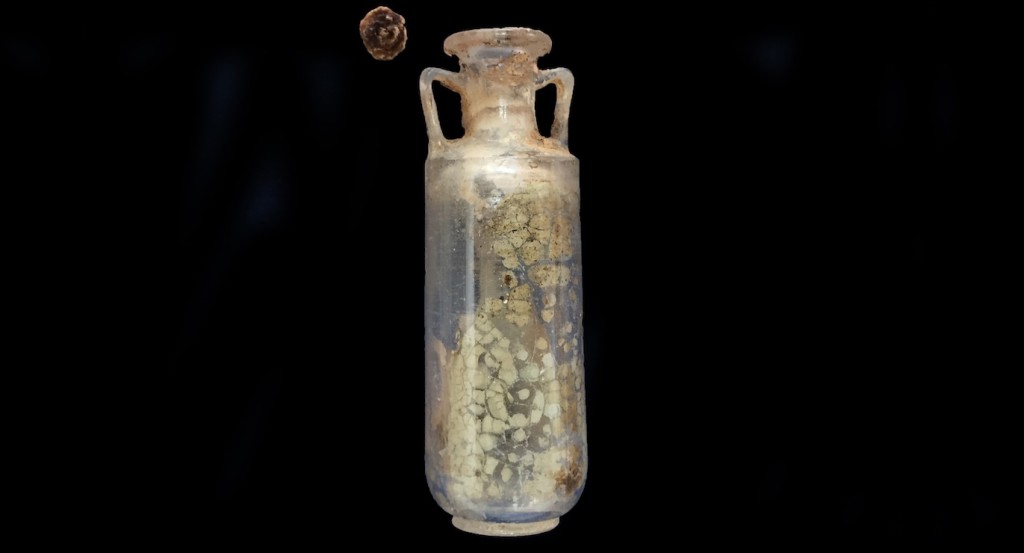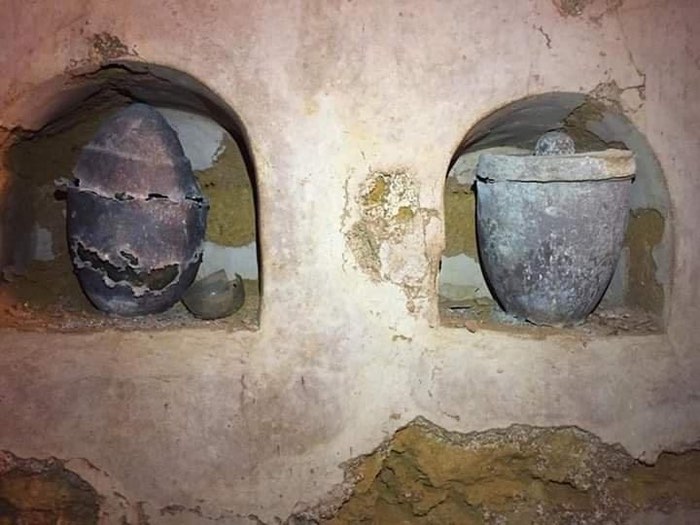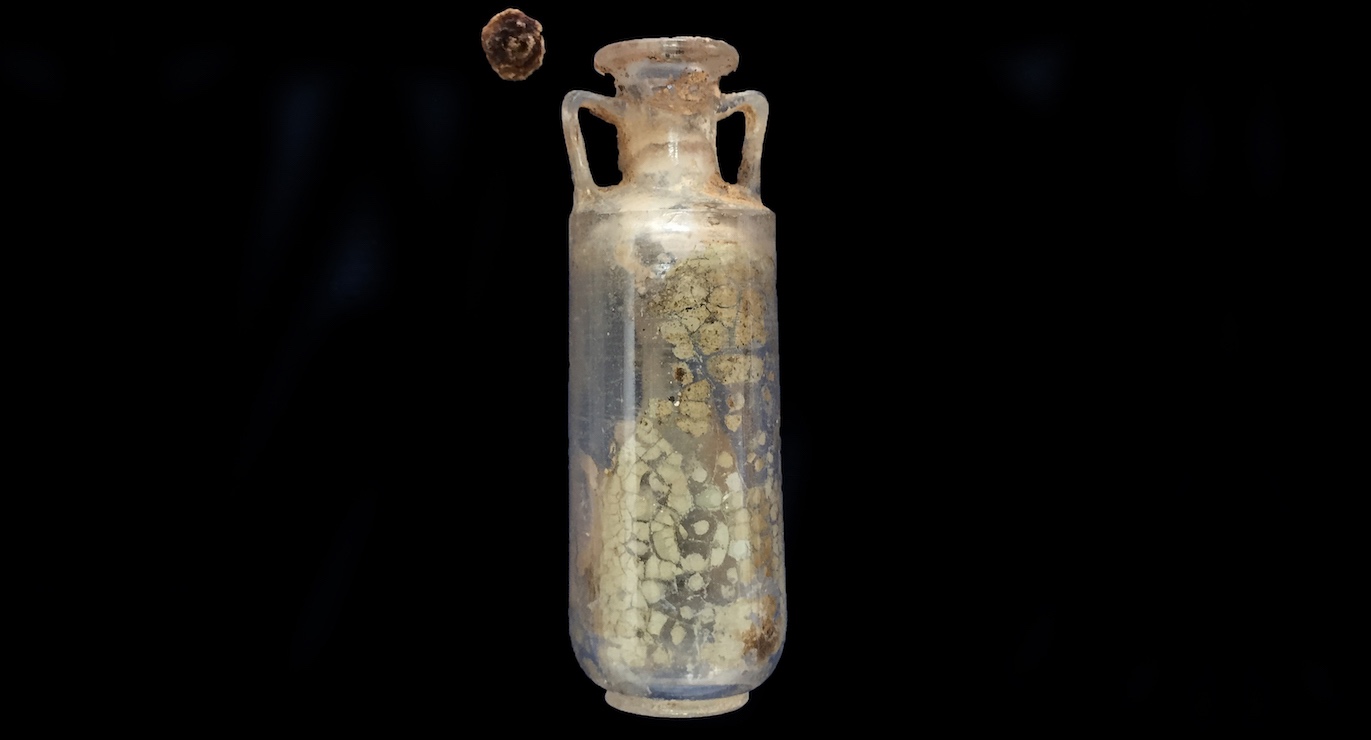
A real whiff of ancient Rome from 2,000 years ago was unleashed as a sealed vial of Roman perfume has been opened—and a whiff of patchouli oil wafted through the air once again.
The stopper, made of dolomite—a type of carbon, and a tight seal with bitumen enabled the contents of the tiny glass container to be “extraordinarily” preserved.
The vial was discovered with the ointment intact in a funerary urn in the Roman city of Carmo, today’s Carmona, near Seville in Spain.
It was discovered during an archaeological dig in a mausoleum that was found during the construction of a house on the Calle Sevillat.
It had been preserved, solidified, inside a vessel carved in quartz, which was still perfectly sealed.
It was a collective tomb, possibly belonging to an affluent family. In addition to numerous objects related to funeral rituals, the cinerary urns of six adult individuals—three women and three men—were found.

In one of the urns, made of glass, over the cremated skeletal remains of a woman between 30 and 40 years old, a cloth bag had been placed containing three amber beads and a small quartz flask carved in the shape of an amphora, containing the ointment.
LOOK: Archaeologists Reveal Extraordinary Cave Art Carvings Beneath 2000 Years of Sediment in Alabama
The truly extraordinary aspect of the find was that, twenty centuries later, it was still perfectly sealed, and that the solid residues of the perfume had been preserved inside, which made it possible for researchers to test every component of the find.
Professor of Organic Chemistry at the University of Cordoba, José Rafael Ruiz Arrebola, was able to analyze the sample and the results were published in the journal Heritage.
To work out what was in the perfume, Prof. Arrebola and his team used X-ray diffraction and gas chromatography coupled with mass spectrometry.
POPULAR: The First Viking Ship Burial Found in Over 100 Years Reveals its Lost Secrets
Beyond identifying the airtight bitumen seal and the cylindrical stopper made of dolomite, two components of the perfume were identified.
The base or binder—which allowed for the preservation of the aromas, and the essence itself—was a vegetable oil, or possibly olive oil according to some indications reflected in the analysis.
The results of chemical analyses showed the essence itself was patchouli, an essential oil obtained from a plant of Indian origin that is used in modern perfumery.
CHECK OUT: Archeological Dig Starts at 5,000-Year-Old Tomb Linked to King Arthur
The monumental characteristics of the tomb and the valuable material used for the vessel containing the oil, suggests that it was a highly valuable product.
“To our knowledge, this is possibly the first time a perfume from Roman times has been identified,” said Arrebola.
“This is the first report on the use of bitumen as a sealing agent in an unguentarium with a dolomite stopper—another unique finding.”
These findings constitute a breakthrough in the field of Roman perfumery, uncovering the use of patchouli as an essential oil.
SEND THIS Sweet Smell Around the World By Sharing on Social Media…




















